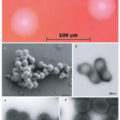
A paper in the journal Science details how a team of investigators from The Scripps Research Institute and the Genomics Institute of the Novartis Research Foundation have discovered a way to screen hundreds of non-coding RNA molecules to discover their functions within cells. Unlike mainstream RNA, which is copied from DNA to build proteins, these non-coding RNA molecules are not translated into proteins. Sometimes referred to as “junk”, there are many thousands of these non-coding RNA molecules inside human cells. Scientists believe that even if only a small percentage are functional, this would equate to hundreds of molecules that may play important roles in the control of cellular functions.
It’s only recently that scientists have become interested in non-coding RNA. One of the reasons for the turnaround is that they have begun to recognize just how abundant non-coding RNA is. In the same issue of Science, two reports describe the work of other scientists showing that there are far more non-coding RNAs than most researchers would have imagined even a few months ago.
But now they have. And it appears that the team has established the first proof of a cellular function by non-coding RNA. To apply a high-throughput approach to the problem, the teams began by collecting a library of 512 evolutionarily conserved non-coding RNAs. A technique called RNA interference was then used to silence the non-coding RNA within cells. The researchers then screened for changes, such as the increase or decrease of activity related to a certain cellular protein. In theory, if this change occurs as a sole result of altering the level of a non-coding RNA, then that non-coding RNA could well be involved.
Out of the 512 target non-coding RNAs, eight of them appeared to have a cellular function. Six appeared to affect cell proliferation, one influenced the hedgehog (Hh) signal transduction pathway, and the final one was a strong modifier of nuclear factor of activated T-cells (NFAT) signaling. The researchers decided to examine in detail this last non-coding RNA. Suspecting that it might interact with proteins, they used a technique to trap the proteins with which the non-coding RNA was interacting. There were ten, a few of which were of the class known as “importins,” involved in the transport of materials from the cytoplasm to the cell nucleus. Among these was the protein “nuclear factor of activated T cells” (NFAT). The scientists found that when they blocked the non-coding RNA, the activity of NFAT increased dramatically. For this reason, they dubbed the non-coding RNA the non-coding repressor of NFAT “NRON.”
The researchers are excited about their new experimental strategy which they say could be ramped up to screen thousands, rather than hundreds, of RNA samples. “You could apply this methodology to look for functions of many other non-coding RNAs,” said Scripps researcher Aaron Willingham. “We have only just hit the tip of the iceberg,” added Professor Peter G. Schultz, also from Scripps. “There’s a whole world of this non-coding RNA.”








Comments are closed.